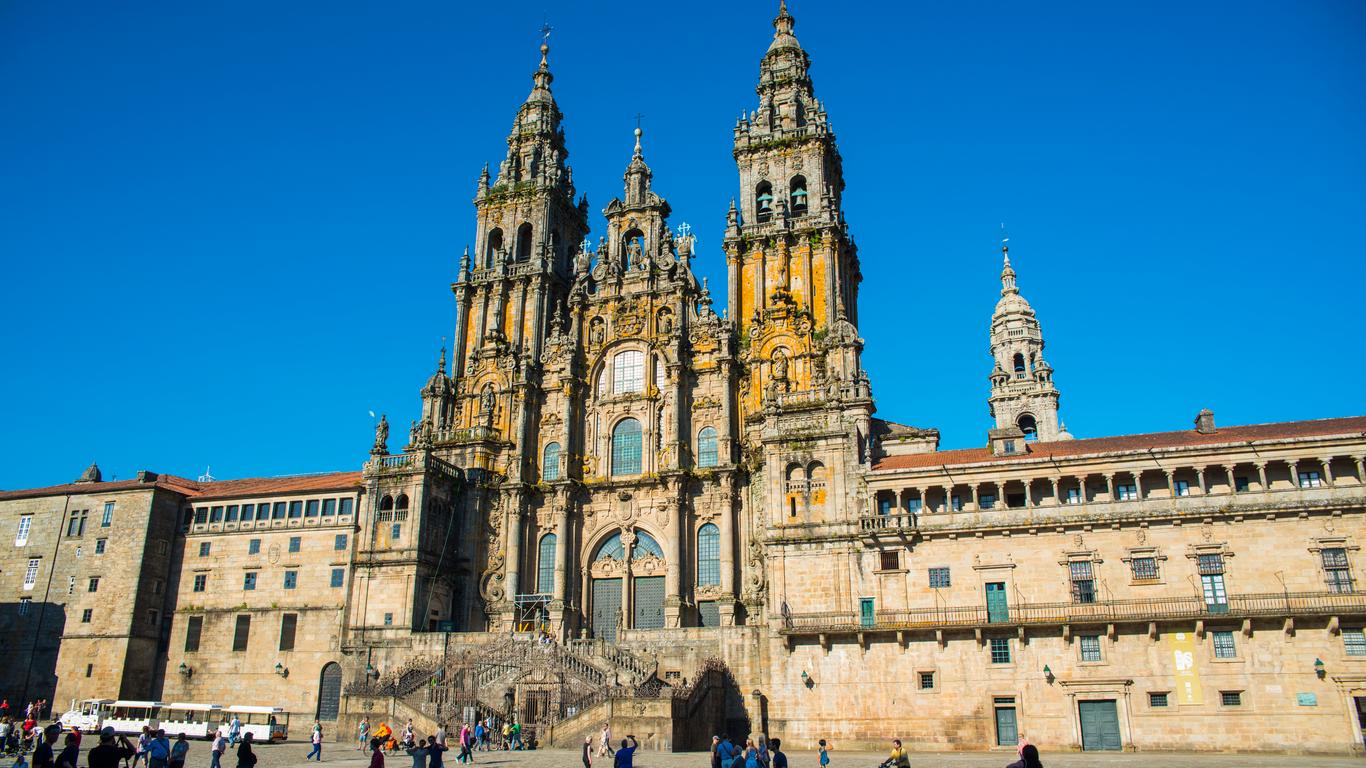The Cathedral of Santiago de Compostela is an architectural and cultural landmark of primarily Romanesque style, situated in the city of Galicia, Spain. The cathedral is contained by the prominent Santiago de Compostela World Heritage Site. It serves as the end of a pilgrimage route and is the presumed burial site of Jesus Christ’s Apostle Saint James the Great.
The cathedral is contained by the Plaza del Obradoiro highlighted by the Obradoiro facade. The Portico de la Gloria serves as the entrance to the site, regarded as one of the most exquisite creations of medieval art in history. Highlight attractions within the vast cathedral area include the Statue of St. James, the Puerta de las Platerias, alluring Gothic altar, and the presiding relics of St. James.
Walking is the predominant form of transportation around the area of Santiago. There are also public buses that provide access into the city centre with stations located on the outskirts of the city. Taxis are an additional way of getting around.
The modern day cathedral dates back to 1075 although there is some record of a previous site that was burned down. It was quickly recognised as the endpoint of the way of St. James and eventually raised to the status of archiepiscopal.





